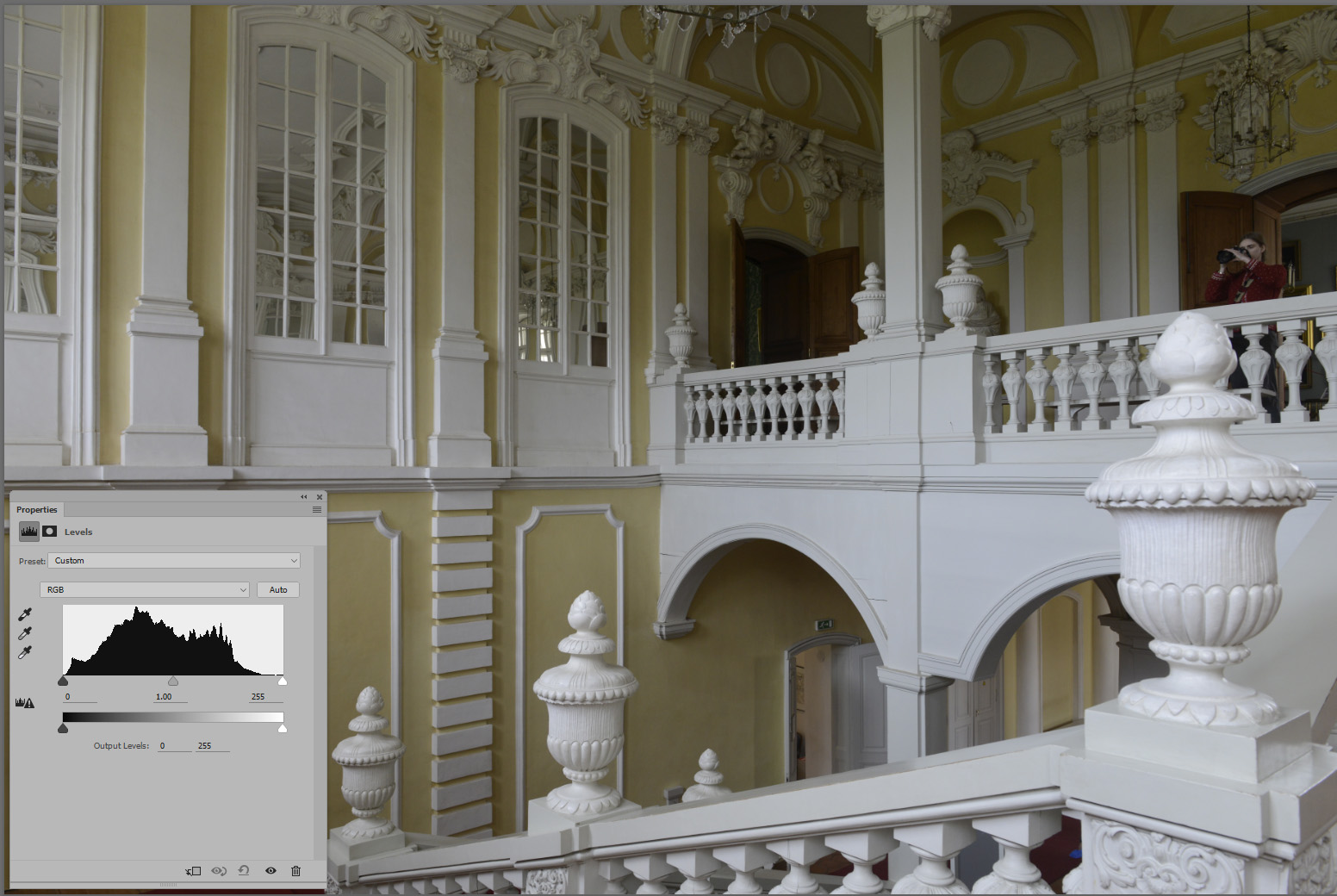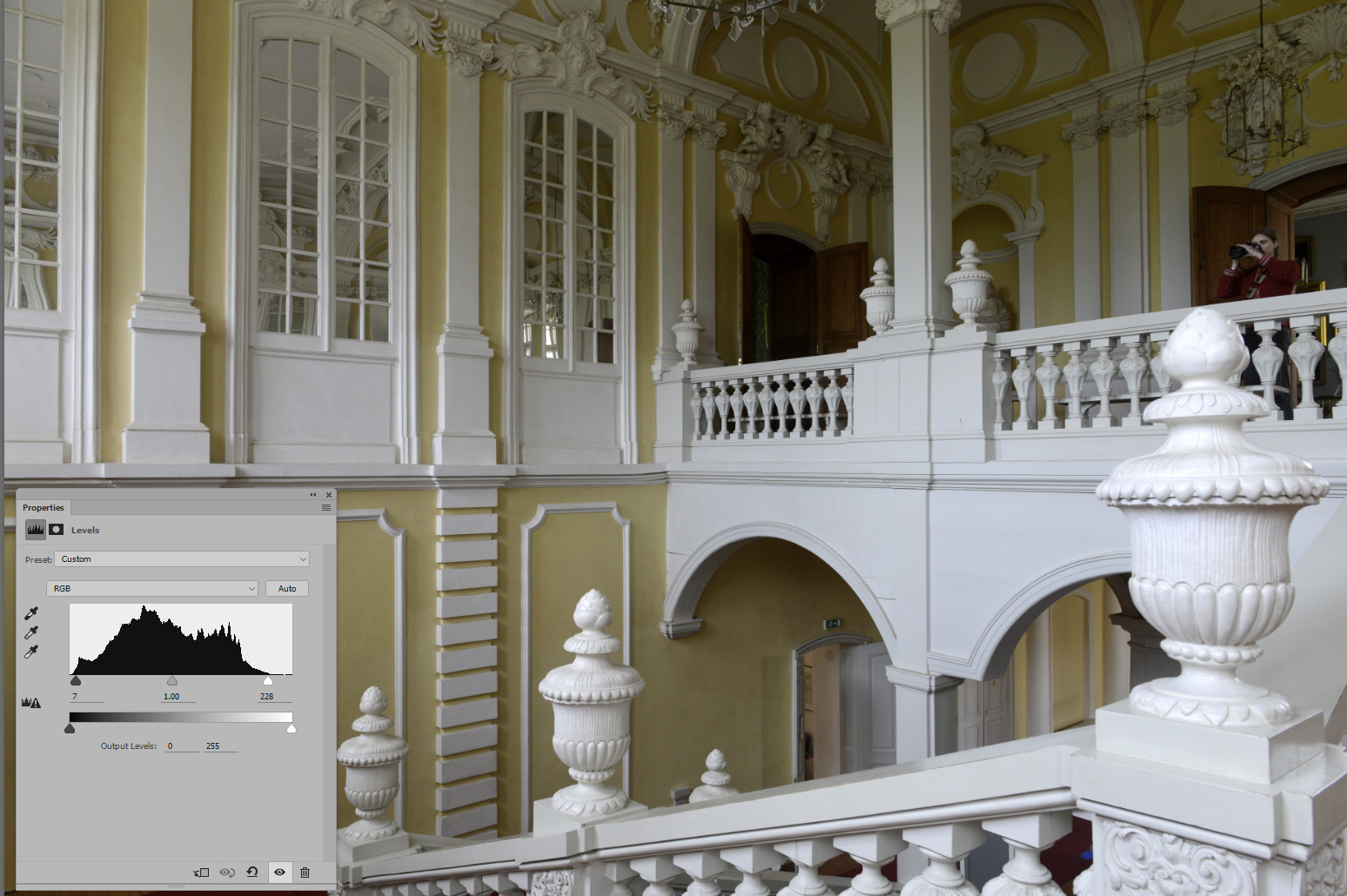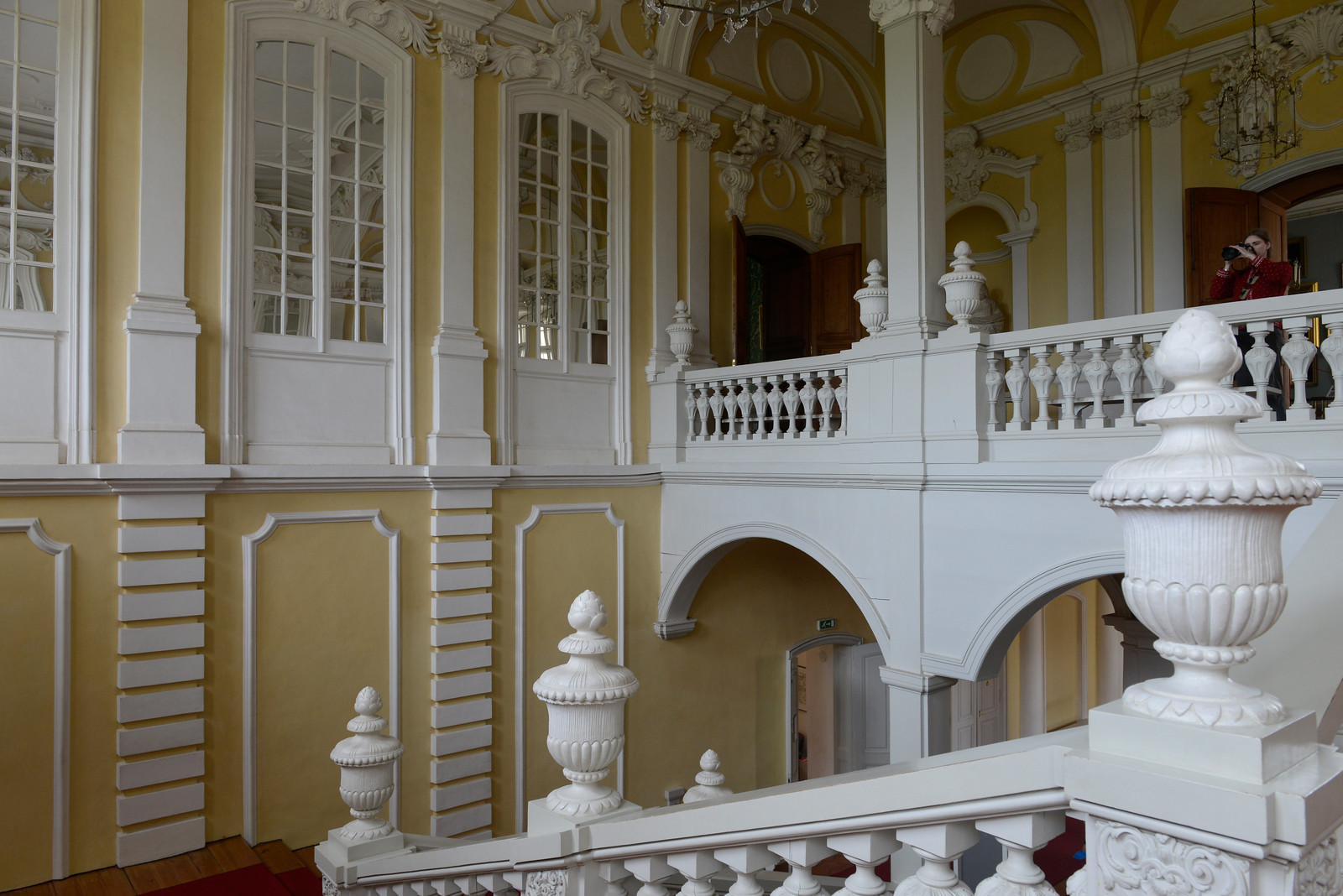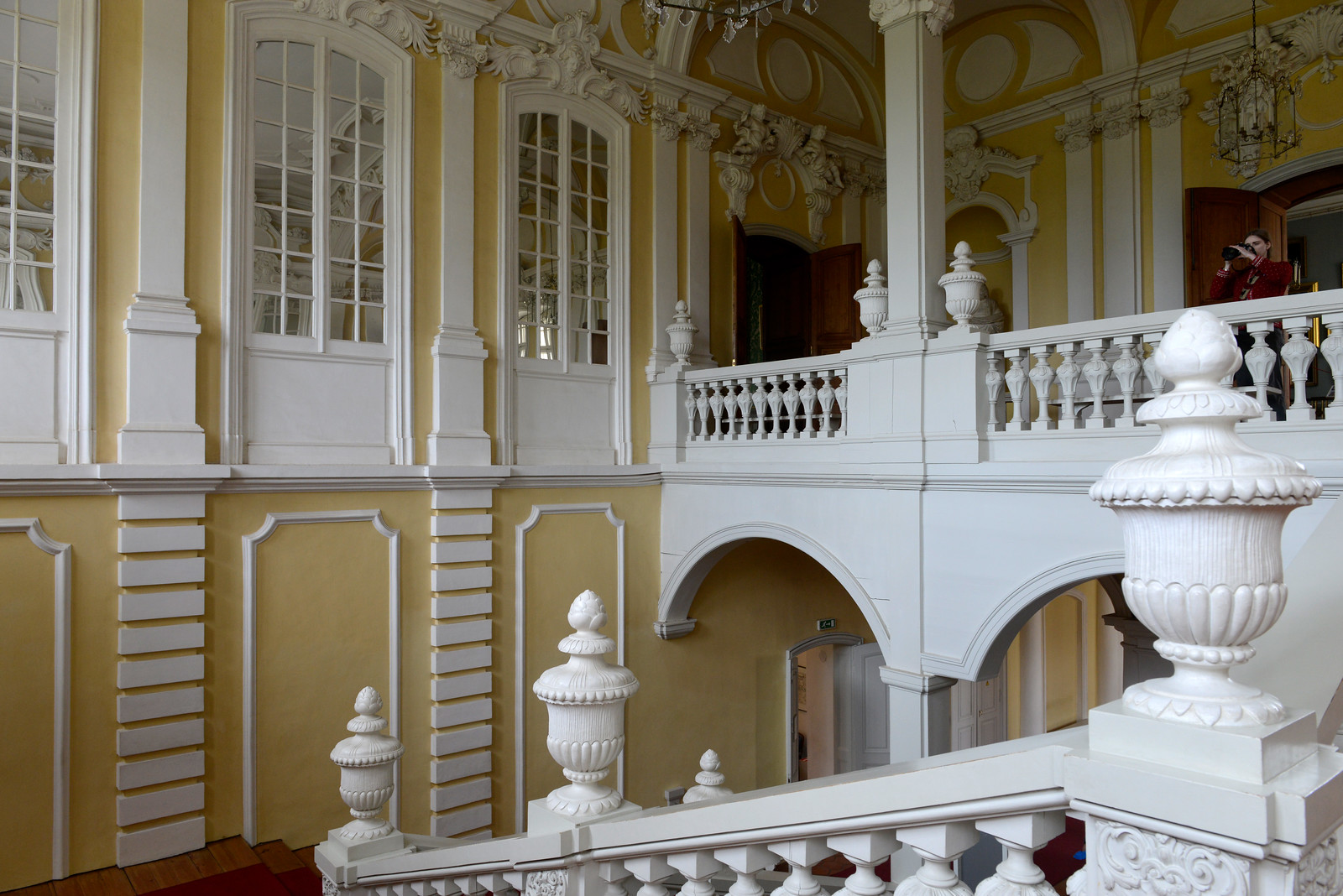One of the first things I do in PP is adjusting the white point /black point ( I will sometimes adjust the horizon if it is really bad and bugging me).
Next I adjust shadows and highlights , then exposure, contrast, clarity, tone etc. It is at this point that, if I am not happy with the colour rendition of the shot that I am sometimes tempted to go back and mess with the white ( mostly) slider. And here is my question:. After the initial setting of black/White points should they be left alone? If not, won't one be starting a loop of continual adjustment?
Results 1 to 20 of 45
Thread: Black Point / White Point.
-
4th July 2016, 01:25 PM #1
Black Point / White Point.
-
4th July 2016, 01:36 PM #2
Re: Black Point / White Point.
Joe,
Which program do you use for your post processing and does it show the effects of those transformations as you go through your process? For instance, I use Lightroom for most of my early editing choices and like you I usually go through a series of steps, however one tip I've read often is to start with the problem areas first; so this can sometimes change my standard workflow. Usually, image noise; even when shooting at ISO 100 is one of the first things I'll correct.
Back to your workflow, LR shows changes (if I have the clipping warning set to display) and usually adding clarity will cause the clipping of highlights to flash again; so at this point I'll either zoom in on that area to see if it is really affecting anything or slightly adjust the B/W points. If I hold down the Alt key and look at the white points on a blackened screen I find that whites haven't really blown anything out and won't reset the points again. Also, the final judgment of your image should be your eyes, if it looks right you might have a winner.
-
4th July 2016, 01:39 PM #3

- Join Date
- May 2011
- Location
- SE Michigan
- Posts
- 4,511
- Real Name
- wm c boyer
Re: Black Point / White Point.
If you're referencing LR, I start with "camera calibration" and work up.
-
4th July 2016, 02:06 PM #4
-
4th July 2016, 02:18 PM #5
Re: Black Point / White Point.
Joe - definitely not. Lightroom actually can set you black point and white point automatically. While I don't always like the way it does things, it is definitely a good starting point.
Hold down the shift key and double click on both the black and white sliders, and Lightroom will take care of the rest.
While I don't use Lightroom, Adobe Camera Raw does exactly the same thing. I leave the clipping indicators turned on for the histogram and press the <alt> key when I set the black and white points. I prefer doing things manually, because I will also work with the shadows and highlights sliders, as well as the black and white ones when I am working on this aspect of the image.
-
4th July 2016, 02:20 PM #6
Re: Black Point / White Point.
I do rough cropping and straightening first(if needed), then use PSCC camera raw filter to adjust black/white point, shadows and highlights, (referencing the histogram and my eye) and maybe-saturation. There are times when adjustments may activate the clipping warning. Then I can either use the highlights/shadows to make a fine adjustments or decide that the area involved is just fine. Yes, sometimes you do work back and forth a bit, but not much.
-
4th July 2016, 07:35 PM #7

- Join Date
- Aug 2010
- Location
- Stockholm, Sweden (and sometimes Santiago de Cuba)
- Posts
- 1,088
- Real Name
- Urban Domeij
Re: Black Point / White Point.
It can be counter-productive to set black and white points first. Some detail can be lost if unsharp mask is used after black and white point have been set too narrow.
My take on it is that they should be set after applying basic sharpness, particularly if you will use unsharp mask. You need a tiny bit of headroom for unsharp mask, so the white point should not be taken all the way to where the histogram ends. You will end up with more pixels clipped if you set the white point to minimum and apply unsharp mask after. If you can estimate how much headroom you would need, it is ok to set them first, but it can help to be a bit conservative and leave just a tad of empty histogram not rising from the baseline at the right end.
-
4th July 2016, 08:16 PM #8
Re: Black Point / White Point.
Totally agree, Urban. Sharpening is the first thing I do when I open an image.
The only step I tend to do before input sharpening is noise reduction, but only if the image needs it. Sharpening noise is not something that one generally wants to do.
-
4th July 2016, 08:19 PM #9
Re: Black Point / White Point.
I guess more clearly understanding sharpening needs to be on my plate.
-
4th July 2016, 09:19 PM #10
Re: Black Point / White Point.
Absolutely. Both the in-camera anti-aliasing filter found on most cameras and the de-mosaicing process during image conversion add softness to your raw data and this needs to be compensated for on image import for PP work. Secondary sharpening work on parts of the image during PP work may also be necessary. Finally, especially if you print, the sharpening has to be tweaked when the image is being prepared for output.
-
4th July 2016, 11:58 PM #11

- Join Date
- Oct 2013
- Location
- Philippines
- Posts
- 12,181
- Real Name
- Brian
Re: Black Point / White Point.
Hi Joe, my workflow is not quite what has been described so far so here's another way to work.
The first step for me is to figure out the crop.
Once cropped I work with exposure and the histogram to get my mid range where I want it.
move to white balance.
NOW COMES LEVELS WITH BLACK AND WHITE POINTS
Then It is time to play with the other adjustments.
Certainly not how most people work. And perhaps not at all what would work for you.
Pp would be a lot easier if it was all science but it isn't.
Have fun finding what works with your vision.
-
5th July 2016, 08:08 AM #12

- Join Date
- Jun 2013
- Location
- North West of England
- Posts
- 7,178
- Real Name
- John
Re: Black Point / White Point.
I'm with Brian, at least to the extent that I crop first on the basis that otherwise, for global adjustments, the cropped areas will influence the outcome. Then I follow more or less the same workflow as everyone else.
-
5th July 2016, 08:38 AM #13
-
5th July 2016, 09:02 AM #14

- Join Date
- Jun 2013
- Location
- North West of England
- Posts
- 7,178
- Real Name
- John
Re: Black Point / White Point.
John, you are right, particularly when it comes to perhaps cloning from something that will eventually be cropped but I was talking in terms of the norm for me in preparing for final image quality. There will always be exceptions I guess.
-
5th July 2016, 09:06 AM #15
Re: Black Point / White Point.
When setting the White and Black points, I also leave a bit of space either side of the histogram in ACR for the stretch that later application of Local Contrast Enhancement (LCE) via UnSharp Mask (USM) will cause. (i.e. the lowish amount/large radius USM)
That said, I find that with the Clarity and Dehaze controls in ACR these days (and LR, which I currently don't use), the need for subsequent LCE is diminishing in my workflow.
I rarely/never sharpen in ACR - I always sharpen for my output media; usually on-line display, so done after downsizing, or a separately saved, full resolution version if intending to print, so very late in my workflow. YMMV
If I am using USM solely for sharpening, say Final/Output Sharpening, well, those areas of the image (that would be clipped) are going to be so tiny that leaving room is (I feel) unnecessary. (i.e. the large amount/small radius USM)
I also tend to crop early where not doing so will adversely influence the histogram, but crop late (in workflow) where there's something useful for cloning I might need in PS. I very rarely add a border, but the histogram should be used for judging the image before one is applied, because once there's say, a white border, it will mask assessing how the white point should be set for image content.
However, I evolve my workflow as my learning and skills develop, so in a year's time, I may be doing some things differently and as has been noted, there are always occasional exceptions which cause us to vary our usual practices.
and as has been noted, there are always occasional exceptions which cause us to vary our usual practices.
Last edited by Dave Humphries; 5th July 2016 at 09:17 AM.
-
5th July 2016, 11:34 AM #16
Re: Black Point / White Point.
I see a bit of an issue with some of the comments here as we worry about blowing out black and white values in the FINAL IMAGE.
We definitely don't want to do that during capture, as the data will be lost. Here we tend to be okay if we blow out a few pixels in the shadow details and definitely accept that specular highlights might blow out, but that means we would rather not.
When it comes to the final image, that rule of capture can be thrown out the window, at least to some extent, as there we can definitely accept pure white values and pure black values in our final image. While large amounts of both pure blacks and pure whites are not desirable, small amounts are as this is necessary to get a broad total range into our final image. In fact not doing so is probably the single biggest reason I see for images that do not look good.
In fact, this is exactly what we are doing when we set our black and white points by moving them to were the colour values start ramping up at both ends of our histograms. Just one small note - we need to moderate that slightly for output values for printing, but that's a different discussion.
So to summarize, good photographic practice is to NOT clip at either the dark or light end during capture, but it is GOOD practice to slightly blow out to pure black and pure white in the final image to create a good colour range.
-
5th July 2016, 01:10 PM #17

- Join Date
- Feb 2012
- Location
- Texas
- Posts
- 6,956
- Real Name
- Ted
Re: Black Point / White Point.
Reading through the informative posts, this thread is making me feel somewhat anarchic.
It starts perhaps with posts that imply that the author always does this or that.
Case in point: why would the "good photographer" shoot a morning misty scene with diffuse lighting everywhere but then fire up Levels in post and crank the sliders inside of the histogram bounds (ends)?
As to adjusting black and white levels, why would we always do that and why would we always do it first; or last; or even at some defined stage?
Case in point: If I got a scene exposure spot-on (rare event, of course) why would I even adjust Levels at all?Last edited by xpatUSA; 5th July 2016 at 04:10 PM.
-
5th July 2016, 04:16 PM #18
Re: Black Point / White Point.
You wouldn't - as the the histogram would already be there.
Let me demonstrate the impact of setting the black and white point on a well exposed image. I'm working with SOOC jpegs here and the only PP adjustment I'm doing is the black point and white point.
Image 1 - Screen Shot showing the histogram of the image - no clipped highlights or shadow detail, so to me this is a good exposure.

Image 2 - Another screen shot showing the moved black and white points.

Image 3 - Saved jpeg of Image 1, i.e. SOOC black and white point settings.

Image 4 - saved jpeg with the new black point and white point. Notice how the fourth image is ever so slightly more crisp than Image 3.

-
5th July 2016, 04:20 PM #19

- Join Date
- Feb 2012
- Location
- Texas
- Posts
- 6,956
- Real Name
- Ted
-
5th July 2016, 06:28 PM #20

- Join Date
- Feb 2012
- Location
- Texas
- Posts
- 6,956
- Real Name
- Ted
Re: Black Point / White Point.
Thanks for the demo, Manfred.
The levels adjustment certainly increased the contrast.
I also tried tone curves. First one an S shape followed secondly by a slightly increased linear curve (oxymoron?) (RawTherapee has two tone curves on the basic tab):

.
Seems that curves are less aggressive than levels at the higher end, with the result that slightly more contrast appeared on the foreground finial?Last edited by xpatUSA; 5th July 2016 at 10:29 PM.

 Helpful Posts:
Helpful Posts: 
 Reply With Quote
Reply With Quote
